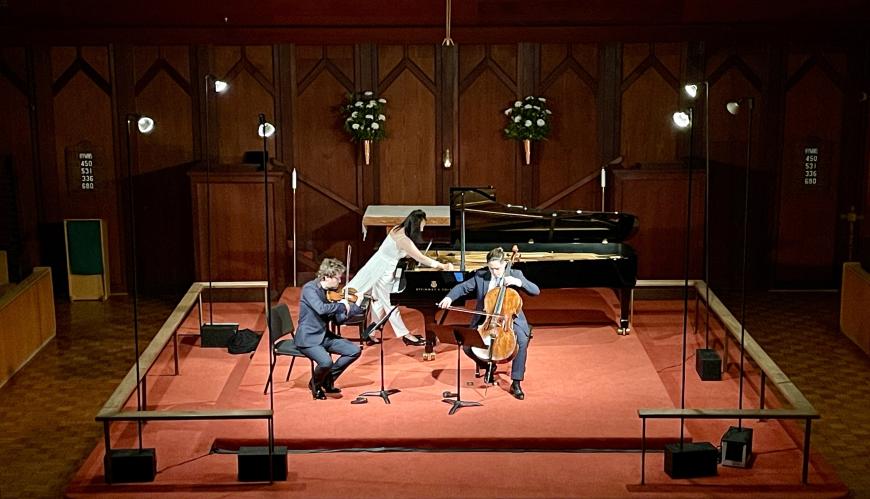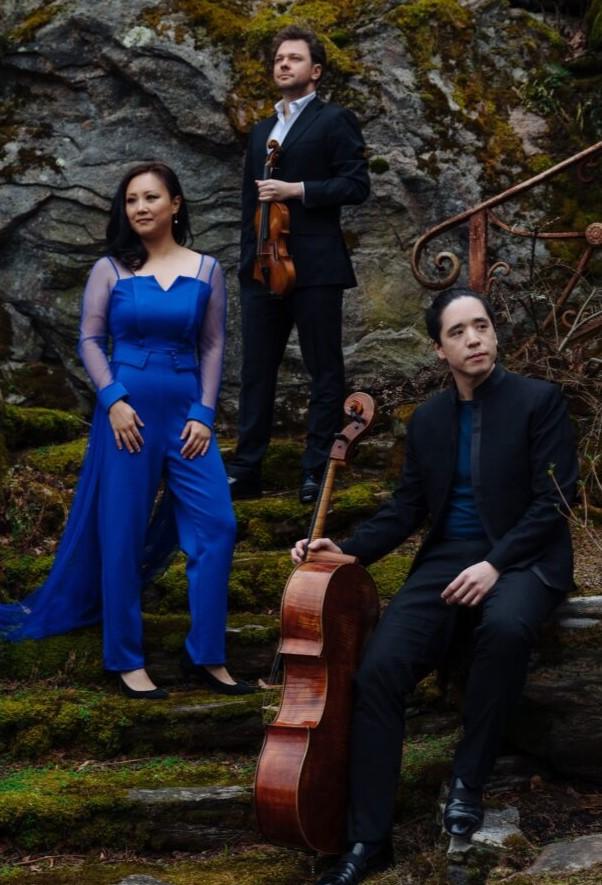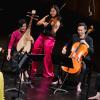
Music@Menlo’s first concert in this season’s winter series was the Sitkovetsky Trio performing at St. Bede’s Episcopal Church in Menlo Park on Friday, Nov. 3.
The program included three full-bodied 19th-century works and a new composition, commissioned for the Trio last year and performed by the group several times since.
The title of Julia Adolphe’s Etched in Smoke and Light alludes to the artistic style of her late father, a painter, in whose memory the work was composed. The imagery fits Adolphe’s musical style just as well. The music began with wispy harmonics on Alexander Sitkovetsky’s violin and Isang Enders’s cello, with light high jangly notes from Wu Qian at the piano. Occasionally she reached inside and plucked a string.
All these high-pitched and quiet phrases are fragmentary and separate, passing each other like the proverbial ships in the night. The effect is like a more consonant version of an Anton Webern piece.

Later, the pitches slip down to midrange, and the sound becomes louder, but even with all three musicians playing at full volume, they trod separate paths. Sitkovetsky at one point played a long passage of painfully dissonant double stops so powerful that I had to look twice to ensure that a line wasn’t coming from Enders or from some invisible second violinist.
Slowly, a coherence grew among the players, but at the very end of the 17-minute work, the music turned quiet and separated again and disappeared off the top end of the instruments. This is a strange and haunting piece of music that serves its memorial function effectively.
The 19th-century works that followed were entirely different.
The players made a hearty run through Cécile Chaminade’s Trio No. 2 in A Minor, Op. 34. This is a big, heavy, clotted work, with piano figurations often hidden behind earnestly emotive string playing. The charm of this music lies in the elegant lyricism of the strings, here sometimes emphasized by slowing the tempo. In the Lento movement, Sitkovetsky’s violin was again so full and rich that I had to glance to see if he had duplicated himself.
Edvard Grieg’s Andante con moto in C Minor functioned as an intermezzo. Grieg undertook writing a trio in 1878, but this was the only movement he completed. He produced a somber, formal work with simple, declarative melodies, often for the two strings together. It’s possible to squeeze a little drama out of this piece, but this performance was plain and rather thick in its presentation.
Felix Mendelssohn’s Trio No. 2 in C Minor, Op. 66, was the masterpiece of the program. The music sailed along with brisk and bouncy energy, embodying the frisky lightness that is this composer’s most distinctive characteristic and not limited to the work’s Scherzo. But the most impressive aspect of this performance was its clarity. In contrast to the Chaminade and the Grieg, here each instrumental line could be distinctly heard, even when all three players were attacking busy clusters of notes at once.
In a way, Mendelssohn’s trio was the opposite of Adolphe’s, bold and extroverted where hers is often tentative and introverted. But the two composers have in common the capacity for precise and lucid presentation when played by the Sitkovetsky Trio.



